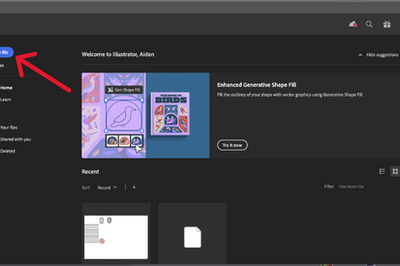
views
Bengaluru: India lost communication with the Chandrayaan 2 unmanned spacecraft Saturday just before it was due to land on the Moon, in a setback to the country's lunar ambitions as the world takes renewed interest in Earth's satellite. Following several tense minutes as the expected landing time of about 1:55 am in New Delhi lapsed, Indian Space Research Organisation (ISRO) chairman K Sivan announced that communication had been lost with the lander, named.
"The 'Vikram' lander descent was (ongoing) as planned and normal performance was observed," until an altitude of 2.1 kilometres (1.3 miles), Sivan said. "Subsequently the communication from the lander to the ground station was lost. The data is being analysed," he said, surrounded by grim faces of scientists and observers in the control room.
Lander Vikram is one of the three components of Chandrayaan 2, an orbiter and a rover being the other two.
The lander is named after father of Indian space research programme Dr Vikram A Sarabhai and aimed to the first to reach the region lunar South Pole region. It carried the rover 'Pragyan' which was to be landed in a high plain between two craters at a latitude of about 70 degree south of the moon.
Then the 27-kg 'Pragyan', meaning 'wisdom' in Sanskrit, a six-wheeled robotic vehicle, was to embark on its job of collecting information on lunar surface. The rover can travel up to half a km leveraging solar energy and both Pragyan and Vikram have a mission life of one lunar day, which approximately equals 14 Earth days.
News18 Creatives
Indian Space Research Organisation (ISRO) chief K Sivan had earlier said that Vikram's 15-minute final descent will be the most terrifying moments as we have never undertaken such a complex mission".
News18 Creatives
The Chandrayaan-2 had 13 payloads in total with eight of them in the orbiter, three payloads in Vikram and two in Pragyan. Five payloads were from India, three from Europe, two from the US and one from Bulgaria.
News18 Creatives
Only three nations have successfully landed spacecraft on the moon — the United States and the Soviet Union during the space race of the 1960s and 1970s, and more recently, China. (An Israeli nonprofit attempted to send a lander named Beresheet to the moon earlier this year, but it crashed.)
Chandrayaan-2 is an advanced version of the previous Chandrayaan-1 mission which had 11 payloads — five from India, three from Europe, two from the US and one from Bulgaria. The first mission had the credit for discovery of water on the lunar surface.




















Comments
0 comment